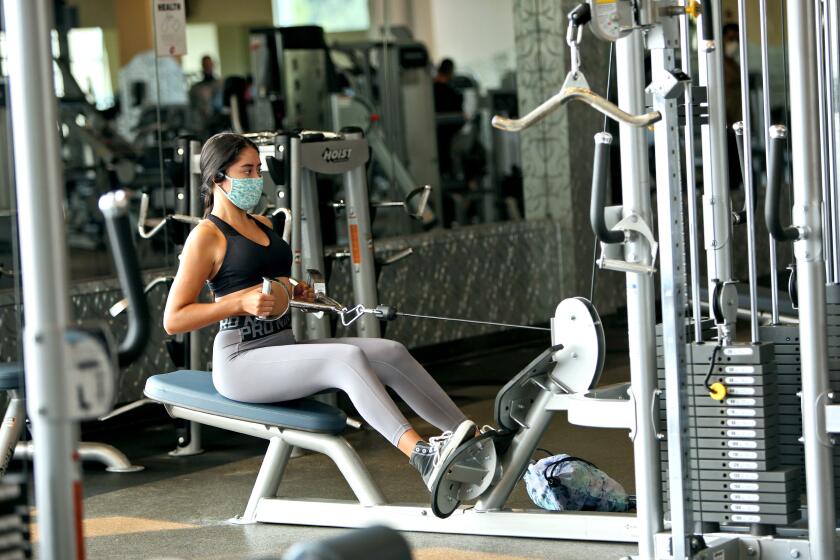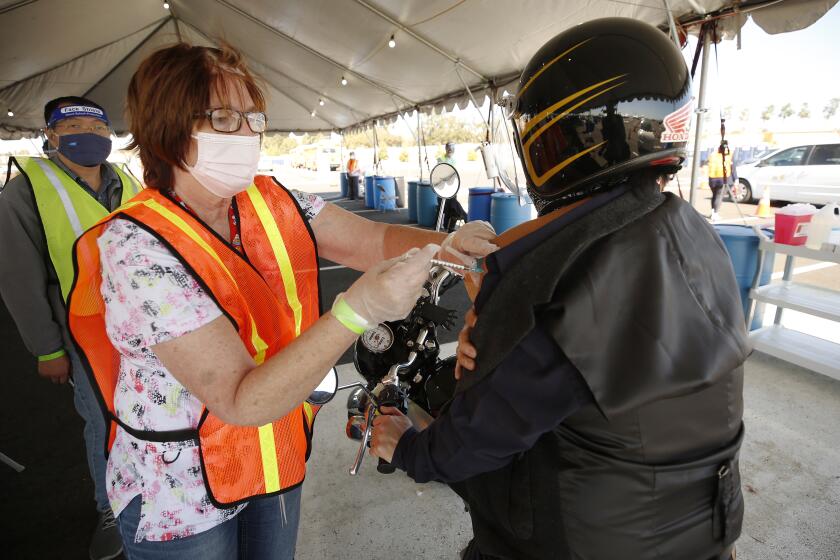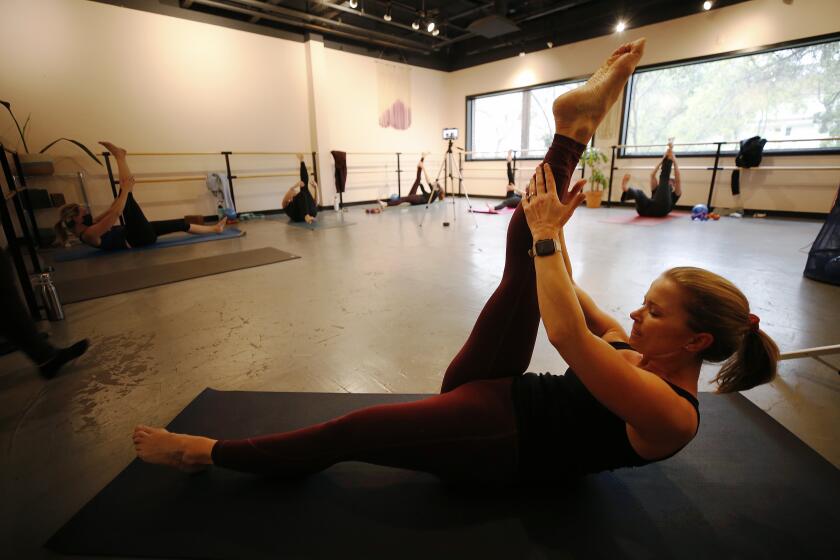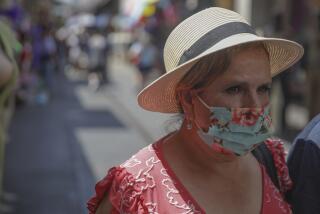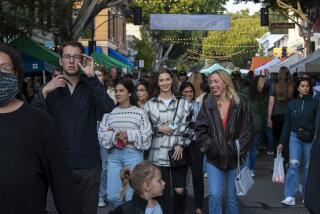Yelling instructors, ventilation and masks: How to return to the gym safely, avoid COVID-19
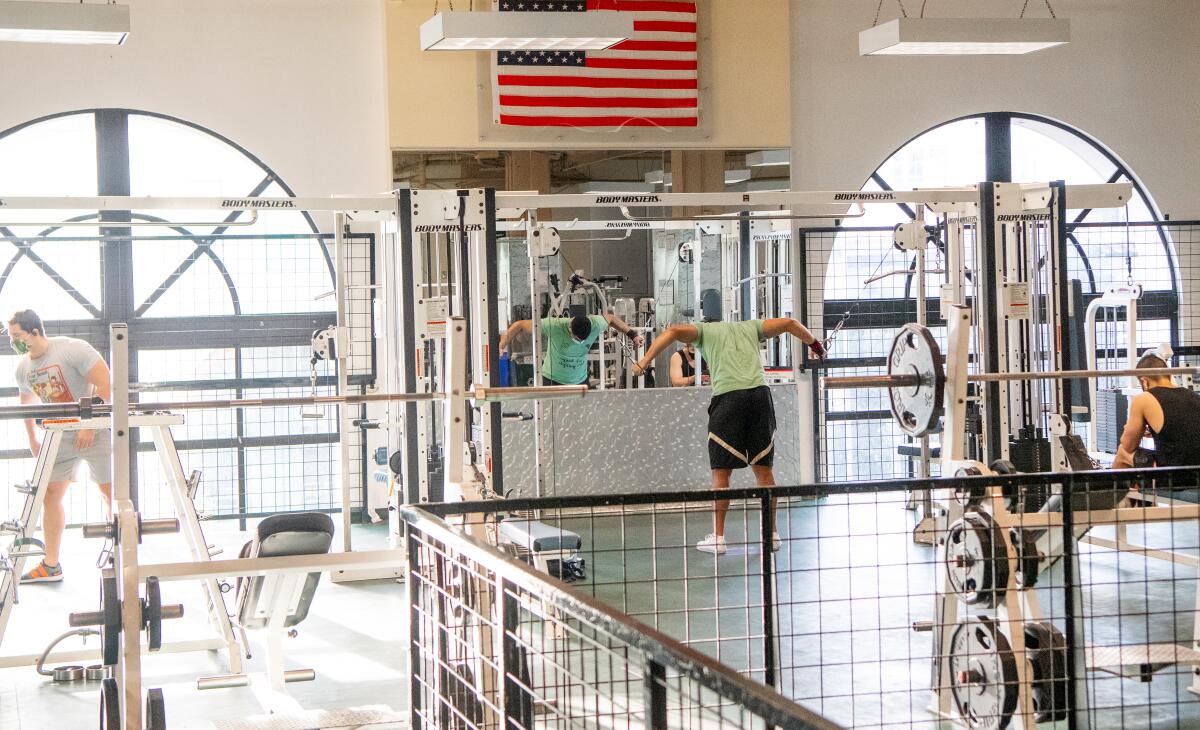
Bigger regions of California are seeing progress in their battle against the coronavirus, and dropping case counts are allowing more businesses to reopen, including gyms.
Many counties have already exited the state’s most restrictive purple tier, and some Southern California counties could reach the red tier threshold in the coming days.
Counties in the red tier can allow indoor restaurant dining and movie theaters to reopen at 25% capacity or up to 100 people, whichever is less. Indoor gyms and dance and yoga studios can open at 10% capacity. Museums, zoos and aquariums can open indoor activities at 25% capacity, and nonessential stores and libraries can open at 50% capacity, up from 25% capacity.
Still, it’s up to local agencies to decide what reopens and what doesn’t.
A new federal report shows that even as the economy reopens, risks remain and caution should still be the order of the day, experts say.
The CDC is urging stricter precautions for gymgoers after tracing coronavirus outbreaks to fitness centers where patrons exercised without wearing masks.
Returning to the gym
Federal health officials warned that people should wear masks while working out at gyms. They released a study that detailed a coronavirus outbreak linked to the infections of 55 people who went to a Chicago exercise facility.
Published in the U.S. Centers for Disease Control and Prevention’s Morbidity and Mortality Weekly Report, the report detailed how, out of 81 attendees of in-person classes between Aug. 24 and Sept. 1, 68% were infected by the coronavirus.
Most of the exercise class attendees who shared information with scientists said they wore masks infrequently. Twenty-two participated in classes either on the same day their symptoms began, or after they began falling ill.
Of those who were infected, two were treated at an emergency room; one was hospitalized for eight days. No one died.
“The increased respiratory exertion that occurs in the enclosed spaces of indoor exercise facilities facilitates transmission of SARS-CoV-2, the virus that causes COVID-19, in these settings,” the report said. “To reduce SARS-CoV-2 transmission in exercise facilities, employees and patrons should wear a mask, even during high-intensity activities when more than six feet apart.”
The exercise facility offered four to eight high-intensity indoor classes daily, the CDC report said, and all classes had been held at no more than 25% capacity, with about 10 to 15 people per class. Class members had their temperature checked upon entry to the facility and were required to wear masks when entering the class, but they were allowed to remove masks during the class.
“Infrequent mask use during class was reported more commonly among attendees with COVID-19,” the study said.
As daily coronavirus cases plunge, California is barreling toward what would be the widest reopening of businesses, schools and public spaces since the horrific surge of the fall and winter.
How to stay safe
Officials also advised that fitness facilities should improve ventilation, enforce consistent and correct mask use, and physical distancing — keeping at least six feet of distance between everyone and limiting physical contact, class size and crowded spaces.
The study authors said that the building where the fitness classes were held was not originally designed for group exercise. “Although the facility’s ventilation system was not assessed, inadequate air circulation might have exacerbated transmission in the building,” the report said.
Officials said facilities should also remind infected workers and customers to stay home and away from other people for at least 10 days after the onset of symptoms or after a positive test if they are asymptomatic. If someone has had close contact with a person who tests positive, that person should quarantine.
As coronavirus case numbers have dropped, seven California counties have moved from the purple tier into the more permissive red tier.
An instructor’s shouts
A second report published in the CDC’s Morbidity and Mortality Weekly Report on Wednesday found 21 coronavirus cases last summer that were linked to a 37-year-old fitness instructor in Honolulu. In one of the instructor’s classes — a high-intensity stationary cycling class for 10 participants — all 10 later tested positive for the coronavirus and became sick with COVID-19. No one wore masks in the class, whose participants ranged in age from 31 to 50.
That instructor’s “shouting throughout the one-hour stationary cycling class might have contributed to transmission,” the report said. “Aerosol emission during speech has been correlated with loudness, and COVID-19 outbreaks related to intense physical activity and singing have been previously reported.”
That class occurred just four hours before the 37-year-old fitness instructor started feeling ill. The virus was transmitted even though the stationary bicycles were spaced more than six feet apart, the report said.
One of those 10 infected participants in the cycling class was a 46-year-old man who was a personal trainer and kickboxing instructor who worked at a different fitness facility. Eleven people associated with the 46-year-old’s personal training or kickboxing sessions — who ranged in age from 53 to 81 — also tested positive for the virus.
The 46-year-old trainer later required hospitalization and admission into an intensive care unit.
For both infected fitness instructors, the rate of transmission was highest in the hours just before they started feeling sick, the report said. “Transmission was likely facilitated by not wearing face masks, extended close contact and poor room ventilation,” the study authors wrote.
The fitness center outbreaks were a prelude to Hawaii’s worst surge of the coronavirus, which forced a new stay-at-home order that again closed gyms and many other businesses.
Reopening begins
While indoor gyms in Los Angeles County have been closed since mid-July, others that had been allowed to reopen elsewhere in California in the summer were again ordered closed in late autumn in the hardest-hit parts of the state as a COVID-19 surge worsened.
Indoor gyms and other exercise facilities can currently be open in 18 California counties: San Mateo, Marin, Yolo, Shasta, Humboldt, Del Norte, Plumas, Mariposa, Trinity, Sierra, Alpine, Santa Clara, San Francisco, San Luis Obispo, El Dorado, Napa, Lassen and Modoc counties.
Counties can adopt rules that are stricter, but not more lenient, than the state’s.
“As we plan to move into the red tier, where additional reopenings will be permitted, we’re looking closely at the science to understand what practices can help reduce community transmission of COVID-19,” Los Angeles County Public Health Director Barbara Ferrer said.
More to Read
Sign up for Essential California
The most important California stories and recommendations in your inbox every morning.
You may occasionally receive promotional content from the Los Angeles Times.
